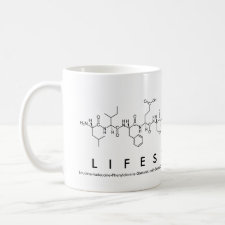
Authors: Ebarvia BS, Ubando IE, Sevilla FBII
Article Title: Biomimetic piezoelectric quartz crystal sensor with chloramphenicol-imprinted polymer sensing layer.
Publication date: 2015
Journal: Talanta
Volume: 144
Page numbers: 1260-1265.
DOI: 10.1016/j.talanta.2015.08.001
Alternative URL: http://www.sciencedirect.com/science/article/pii/S0039914015302216
Abstract: The measurement of banned antibiotic like chloramphenicol is significant for customer protection and safety. The presence of residual antibiotics in foods and food products of animal origin could pose as health hazards and affect food quality for global acceptance. In this study, the potential of a chloramphenicol sensor based on molecularly imprinted polymer (MIP) coupled with a piezoelectric quartz crystal was explored. The MIP was prepared by precipitation polymerization at 60 °C. Methacrylic acid was used as monomer, trimethylolpropane trimethacrylate (TRIM) as crosslinker, and chloramphenicol as the template. Template removal on the resulting polymer was done by extraction using methanol-acetic acid. Characterization of the MIP and NIP were conducted by spectroscopic and microscopic methods. These further supported the imprinting and rebinding process of chloramphenicol to the polymer matrix. The chloramphenicol sensor was devised by spin-coating onto one side of the 10 MHz AT-cut quartz crystal the MIP suspension in polyvinylchloride-tetrahydrofuran (6:2:1 w/w/v) solution. Optimization of sensor response was performed by varying the type of cross-linker, amount of MIP sensing layer, curing time, and pH. The sensor exhibited good sensitivity of about 73 Hz/log (conc., μg mL-1) and good repeatability (rsd<10%). A linear relationship (r2=0.9901) between frequency shift and chloramphenicol concentration in the range of 1 x 10-6 up to 1 x 10-1 μg/mL was obtained. The sensor response was highly selective to chloramphenicol than with other compounds of similar chemical structures. Acceptable percent recovery was obtained for real sample analysis using the sensor. The proposed sensor could be a promising low cost and highly sensitive approach for residual chloramphenicol quantification in food products
Template and target information: chloramphenicol
Author keywords: chloramphenicol, Antibiotic, quartz crystal sensor, molecularly imprinted polymer, precipitation polymerization



Join the Society for Molecular Imprinting

New items RSS feed
Sign-up for e-mail updates:
Choose between receiving an occasional newsletter or more frequent e-mail alerts.
Click here to go to the sign-up page.
Is your name elemental or peptidic? Enter your name and find out by clicking either of the buttons below!
Other products you may like:
 MIPdatabase
MIPdatabase









